The Ultimate Guide To Decanting Wine

How to decant wine is a popular question and now there are thousands of resources around the web hoping to provide you with answers. Learning about wine can be fun, however after searching and searching I failed to find one resource that told me everything I needed to know in one easy to find place.
Decanting wine has many practical purposes, A young wine may need aeration or an older wine could have substantial sediment. More on this will be clearly shown below along with method and trivia, decanting will become an enjoyable and relaxing experience so that you will never think decanting your wine is a “bother and a waste of time” again. I hope that this article gives you the answers on why you should decant wine, when to decant wine and overall, learn about wine and how we can treat it better to get the most out of it.
Contents To The Ultimate Guide For Decanting Wine
Why Do You Decant Wine?
- Remove Bottle Stink From Wine Bottle
- Removing Sediment from Wine
- Aerate Wine
- How To Tell If the Wine Is Ready To Drink
Preparation for Decanting Wine
- What You Will Need to Decant Wine
- Storing Wine Before Decanting
- Wine Storage Temperatures
- Decanting Champagne
- Should You Decant White Wine?
- Can You Decant Rosé?
Full Method on How to Decant Wine
- Removing the Sediment From Wine
- The How to of Wine Tasting
- Aerating the Wine
- Wine Serving Etiquette and Correct Wine Stemware
- Leftover Wine
How To Decant Wine Without A Decanter
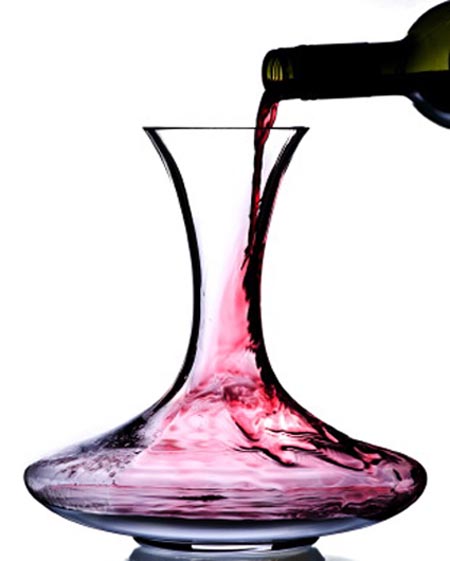
Why Do You Decant Wine?
We decant wine for two main reasons, to remove sediment and to aerate the wine but there are also additional benefits. Why do we decant red wine is a finer question, as the full process of decanting only applies to red wine. People have different occasions for decanting wine, it could be an every day occurrence, for dinner parties or for a bigger occasion such as a wedding.
Remove Bottle Stink From A Wine Bottle
Many young wines develop a strong egg smell due to the sulphur preservatives; this is a minor fault when the wine yeast doesn’t get enough nutrients while fermenting. This smell can drastically ruin the taste of your wine or your experience overall, as the shape of a wine glass is designed to guide the notes directly to your nose. You should ensure to decant these wines to eradicate this smell. This smell can also be removed by stirring the wine with a Sterling Silver spoon.
Removing Sediment From Wine
A wine that has aged in the bottle, typically red as opposed to white will drop sediment. This thick substance is a combination of all the different particles of ingredients within the wine coming together and settling at the bottom of the bottle. This sediment is both ugly to have floating around in your glass and unpleasant in the mouth. It can form bits and cause staining to worsen. These aged red wines are those most deserving of decanting.
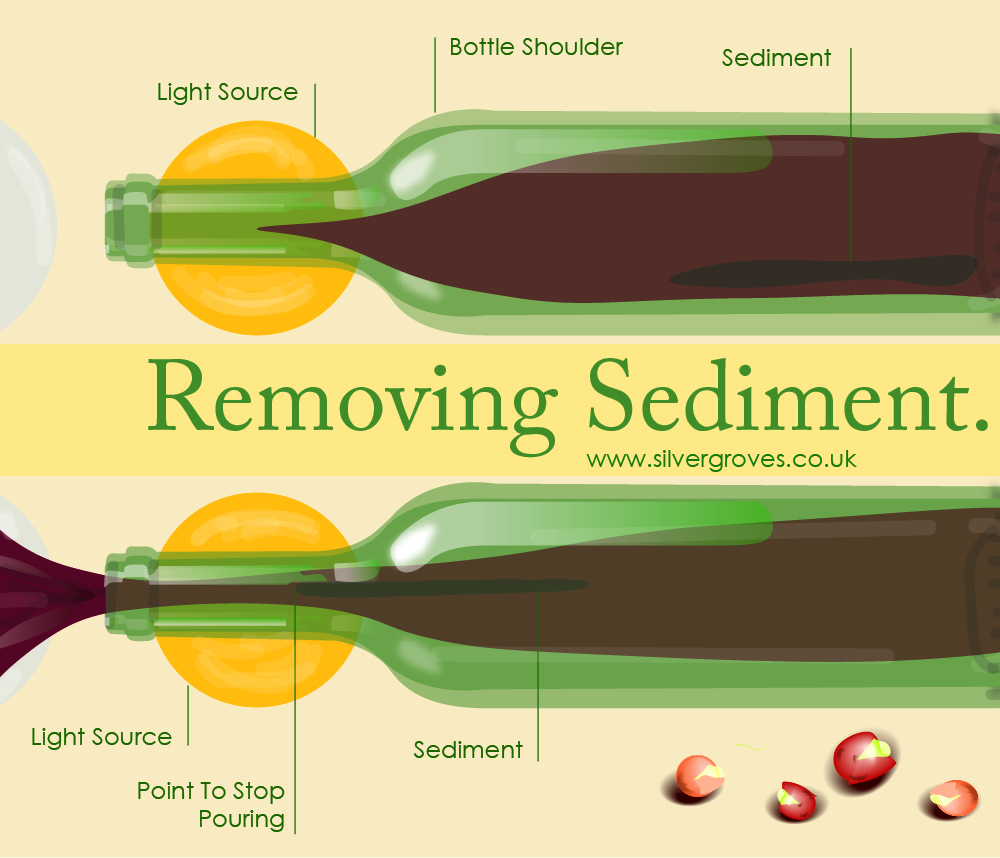
Aerating Wine
Aeration is the act of getting the air in contact with the wine and oxidising it so that the flavours can fully develop – however be warned, leaving your wine to aerate for too long can turn your wine into vinegar, and once it is dead you cannot bring it back.
You may want to aerate a young wine (10 years or less) if the taste is too strong or too tarty, aeration for up to 30 minutes will provide you with a much smoother and complex taste. The aeration time varies for all wines, and there is no solid rule that applies to all. However it is strongly advised to periodically taste the wine throughout the aeration process, and once you feel the wine is ready – drink it! The wine will continue to develop in the glass.
The wine decanter, also known as the carafe, is designed specifically to aid the aeration process. Traditionally they have wide bottoms with a large surface area which exposes more of the wine to the air to create a quicker result. If you are not intending on serving your wine immediately after decanting, you should ensure that your carafe has some kind of stopper so that no delicate flavours or aromas are lost. It is okay to swirl and shake your decanter as this gets more air into the wine.
When pouring from the bottle into the decanter however, it is advised to pour at a 45 degree angle against the opposite side the decanter neck, allowing it to follow the curves of the glass so it doesn’t froth the surface of the wine. Removing the cork but leaving the wine in the bottle also begins the process, but at a much slower rate and is potentially much riskier, as the air only makes contact with a very small surface area. By the time the air reaches the bottom of the bottle, the wine at the top could have become oxidised, or turned to vinegar.
How To Tell If the Wine Is Ready
The one hard rule of wine decanting is that if it tastes right, drink it! A good wine will only deteriorate if left too long and you cannot bring it back. If you cannot taste much fruit, it is overly tannic or you are struggling to identify any aromas then the wine is “closed” and will need decanting. If the wine is ready it will be noticeably smoother and more pleasant. There should be the scent of fruit flavours and you will know it is ready because of your control wine, taken from the start of the decanting process to compare with.
Preparation For Decanting Wine
What You Will Need For Decanting Wine
- A good quality, clear wine carafe
- Your wine of choice
- Candle or flash light
- Corkscrew
- Sharp knife
What Does A Decanter Do?
A crystal decanter is a vessel to hold liquid in, particularly alcoholic drinks like whisky and wine. Each decanter is crafted to a specific design to specifically aid an individual liquid, so it is important that you get a decanter which suits your needs. In this article you will hear me use the terms decanter and carafe – a carafe, compared to a decanter, is a decorative vessel to hold the liquid in and is used for more than just wine such as water or soft drinks.
Storing Wine
The temperature wine is kept at is more important than most people think. Cold temperatures slow the rate of fermentation but extremely cold air can increase the acidity of red wines which are high in tannic acid. Warm air can cause the wine to mature too quickly and not keep long. Temperature changes also affect the wine, so do not store in an area where temperature fluctuates as this can accelerate ageing and reduce lifespan.
- Avoid high places as heat rises.
- Store in a cool, dark, unused place to reduce disturbances.
- Store champagne in a refrigerator.
- White wine, Rosé, Sparkling wine and dessert wine lose flavour when kept in a refrigerator for too long, but the tastes are enhanced when served chilled. The best method is to avoid storing them in the refrigerator, but to chill them in the refrigerator for only a few hours before serving.
- Store wine horizontally, keeping the corks moist. This makes them swell and stops air and bacteria from entering the bottle.
- Allow space between the storage of bottles as the vibrations promote a sour taste as dead yeast cells in the sediment are unable to settle.
- Avoid sunshine or ultraviolet light as this will give wine a flat or musty flavour.
- Humidity levels should be at a minimum of 74%, however anything over 95% will promote mould.
Wine Storage Temperatures
- White wine, Rosé and Sparkling wine are stored at cooler temperatures than red wines.
- Wine stored in the ambient temperature of 20 to 21 degrees Celsius (68 to 70F) will keep for several months.
- Red wine tastes better when served slightly below room temperature.
- White wine tastes great from about 44 – 57 °F.
- Sparkling wine do best at 38 °F – 45 °F
- Warmer wine, typically above 70F will begin to smell more alcoholic because of the increased ethanol evaporation.
First you will need to take your bottle of wine from wherever it has been stored, preferably somewhere dark and cool where it is not frequently disturbed or moved. You will want to stand the bottle upright for at least a few hours to allow the sediment to settle at the bottom of the bottle.
Ensure your carafe is clean and free of all dust or anything that could affect the flavours or nose of your wine. You should never wash your carafe with detergent or soaps, instead use a mix of crushed ice and coarse salt to remove any residue wine and simply rinse with hot water. If you are not convinced by this method, you can give it a cycle in the dishwasher but without any detergent or soap powder. It is then advised that you rinse with mineral water to remove any odours it may have picked up. When opening the bottle, you want to remove the entire capsule around the neck with a sharp knife. Removing any metal or plastics will ensure you have no obstructions when watching for sediment whilst decanting.
It is traditional to cut the foil from the bottom lip because foils were previously made out of lead, this method reduces stray drips. Foil cutters, however, are designed to cut the top of the lip. Cutting the top lip is more visually appealing and ideal for moments where the wine is on display. Even when decanting it is advisable to present the bottle at the table for guests to refer to. When removing the cork, aim the corkscrew just off centre of the cork, this will make the radial diameter of the “worm” (the screw) centred, making it less likely to tear or break. The corkscrew should be inserted one turn less than all the way into the cork. Following this should ensure you do not break the cork.
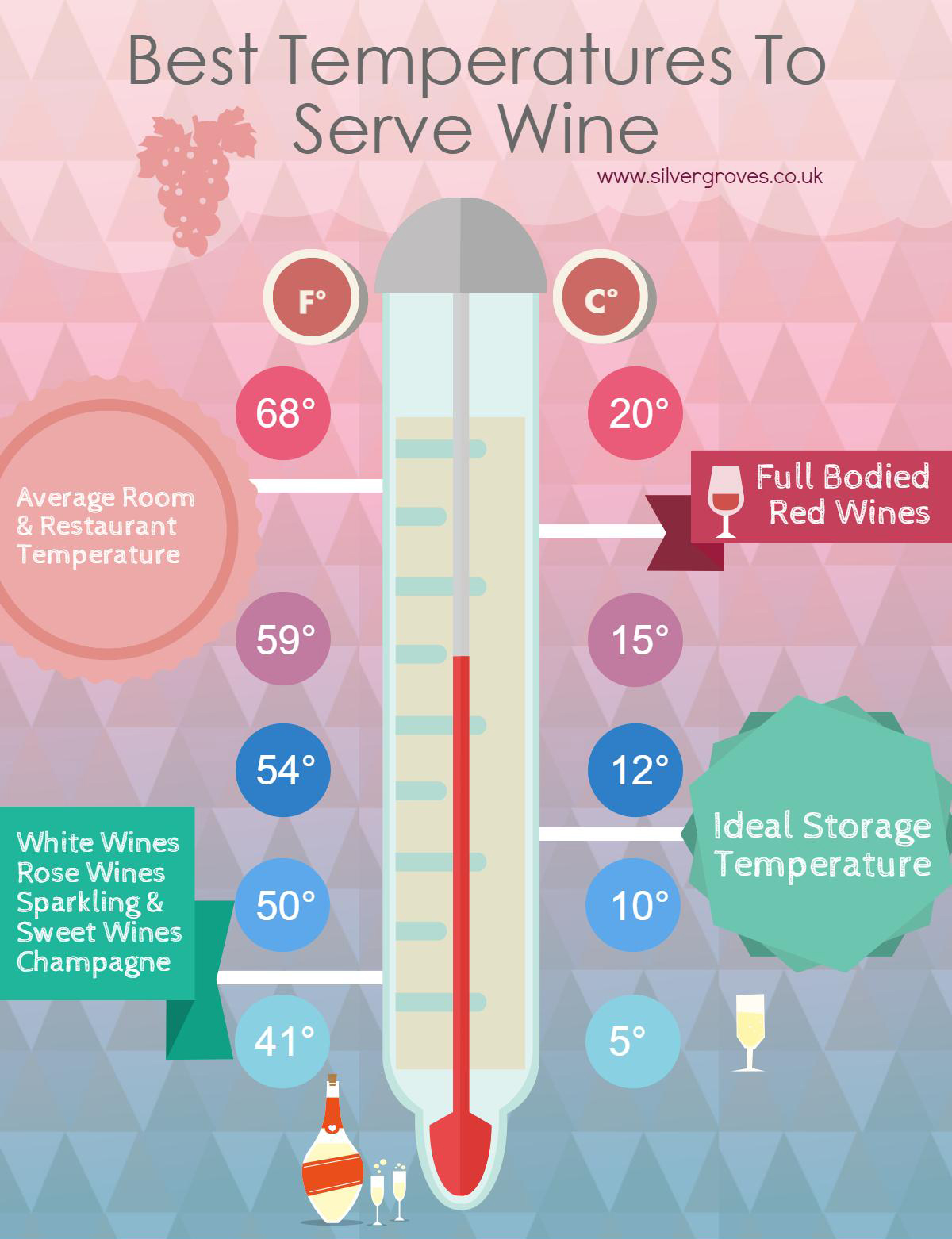
If Decanting Champagne or Sparkling Wine
Many people decant champagne or sparkling wine to reduce the bubbles so that they can fully appreciate the taste. Removing the cork from the bottle often causes the cork to compress against the glass, create pressure and this makes the wine fizz up from the bottle, often losing a lot of the wine in the process. Instead there is a simple way to open the bottle to avoid this.
- Remove the top covering of foil.
- Twist the metal loop attached to the wire muzzle to the left.
- Remove the Muzzle.
- Hold the bottle firmly around the neck.
- To prevent the cork from shooting out from pressure, hold it in place with your thumb.
- Hold the bottle in one hand and with the other hand turn and loosen the cork.
- Cover the bottle with a napkin to absorb any wine that may escape in this process.
- A tilted bottle of sparkling wine moves pressure away from the cork and puts it against the side of the bottle. Hold the bottle at a 45-degree angle towards a clear area.
- Push the cork upward with the thumb, and gently ease it from the bottle.
- The cork should expel with a soft sigh, rather than a loud bang.
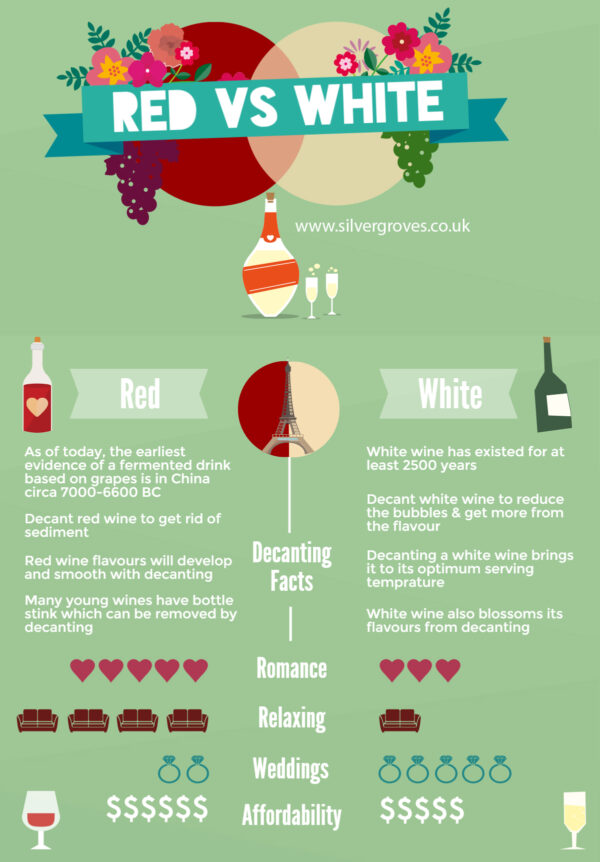
Should You Decant White Wine?
White wine contains less tannin than red and so does not last as long but many people decant white wine to reduce the bubbles, giving them a better experience of the wines flavours. A white wine’s delicate aromas and flavours can be ruined by being oxidised and as this occurs quite quickly, it is advised to keep aeration to a minimum. Since white wine drops very little if no sediment, there is little need to go through the process of separation. A sharp, tight white wine could benefit from some aeration of up to 30 mins; taste periodically to ensure you do not end up drinking vinegar. So yes, you can decant white wine with some caution and care, but check with your guests first as they may enjoy the bubbles!
Can You Decant Rosé?
In all my searches across the web I have never been able to find a solid answer to this question, but from numerous tests, trials and tribulations I can safely say do not decant Rosé. Rosé has a lively, fruity palette that is already celebrated for its pleasant taste, aerating it would only damage its already delicate composition. If you would like to present your Rosé in a carafe at the table however, you could pour the Rosé into the carafe just before serving after being chilled for several hours. There is no need to remove sediment and the simple act of transferring from bottle to carafe is enough aeration for this particular drink, be warned however, as once transferred to a carafe it is unlikely that the Rosé will keep overnight without being refrigerated. Many people believe Rosé to be a modern revolution and a combination of red wine and white wine but is notably one of the oldest known types of wine. Rosé wines can be made still, semi-sparkling or sparkling and with a wide range of sweetness levels from dry Provençal rosé to sweet White Zinfandels and blushes. Rosé wines are made from a wide variety of grapes and can be found all around the globe.
Full Method For Decanting Wine
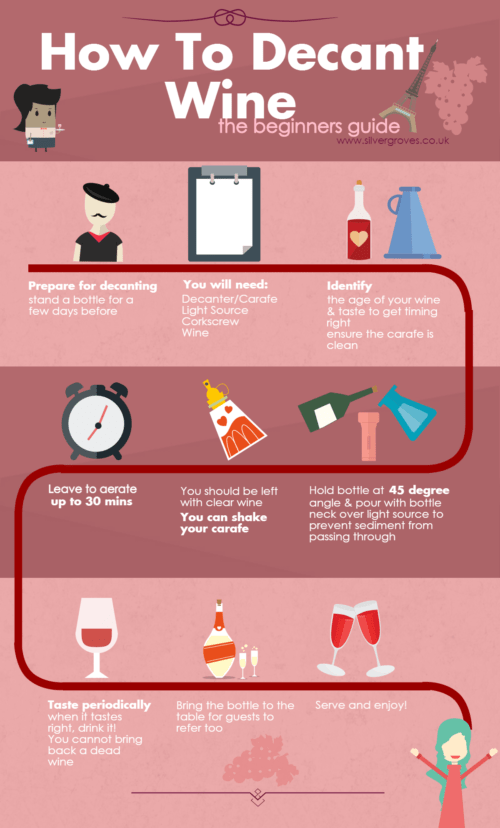
Removing the Sediment
- Uncork your wine or remove stopper or lid.
- Before you decant your wine, pour a small glass to taste the wine to assess the length of time it will need.
- Pour slowly at a 45 degree angle from bottle into carafe, guiding the stream to hit against the opposite side of the carafe neck so that it gently flows over the glass curves, avoiding frothing the surface. Use the light source to locate the sediment and avoid pouring sediment into the carafe but do not heat the wine as you decant it as wine is sensitive to temperature.
- Once you have tipped the wine bottle up enough that the sediment reaches the shoulder of the bottle, it is time to stop. However if you feel you could get more from the bottle you can always allow the wine to sit for a while so that the sediment settles once more and try again in a few hours. Unfortunately it is more than likely that this sediment will not separate from the wine. A popular choice is to use a coffee filter, though this can harm the wine and remove too much substance and upset the balance of the flavours.
- The end result of your decanting process should be a carafe full of clear wine, with half a glass of the sediment laden wine left within the bottle. This remaining wine is a great cooking ingredient, so be sure not to waste it.
How to Wine Taste
Wine tasting at home is great; it can make you feel at ease and superior all at the same time – full of confidence! Wine carafes are a great thing to have around your home for storing your decanted wine as it oozes sophistication before you even start on the plonk. You can have your glass wine decanters, silver wine goblets and crystal red wine glasses all on presentation together for the full effect when hosting your own wine tasting parties at home. The following simple steps will teach you how to taste wine properly, and once you know how to wine taste you will be able to fully appreciate the effects of decanting. Why decant red wine, or why do you decant wine of any kind will become apparent to you. Be sure to pass your wine tasting tips onto your friends too – but not in a pretentious kind of way! A wine tasting party at home may sound like a great idea at first, but be sure to know how long to decant wine for before hosting a home wine tasting party as this could be disastrous if you don’t really know what you are talking about. Study before hand and always practice, doing is always the best way on how to learn about wine. Take a small taste of the wine to check the starting flavours and asses how long it will need to aerate, see below our list of pointers on how to detect the different flavours and properties of your wine:
- Pour into the proper wine glass for the type of wine you will be decanting.
- Look – hold the glass up against a white background to evaluate its colour and clarity. Red wine fades with age, white wines darken with age. Wine that is discoloured or cloudy may be bad or off. If the wine is brown it may have been exposed to too much heat at one point.
- Swirl – Swirling the wine will allow it to oxidise just enough to release its aroma.
- Smell – Put your nose in the glass and take a deep breath. Older wines should have subtler scents than younger ones; note that delicate fruity aromas will dissipate quickly with decanting than full bodied wines. Investigate the smell of any wet cardboard or mustiness, this tells you that the wine is “corked”, meaning the cork has been tainted. If your wine smells decayed then it could be from the grapes yeast getting into the wine.
- Taste – Fill your mouth ½ full and swish the wine. This should release its aroma and coat your mouth and will give you a final judgement on whether the wine needs decanting for a longer or shorter period of time. If the wine tastes dull or cooked it may have oxidised, making it taste and smell like vinegar and turn discoloured.
Aerating Your Wine
- Swirl the wine within the carafe and then leave for approximately 30 minutes, checking back periodically to taste and assess the development stage.
- When it tastes right to you – serve and enjoy! Remember, if you leave a wine to decant for too long, you can never bring it back and you will get a harsh vinegar taste. The length of time to aerate varies for each wine, so coming back to taste every so often is an important step. It is always better to get the wine close to perfect and then continue developing in your glass while serving.
Wine Serving Etiquette
Ensure you have the appropriate stemware for your chosen wine, quality crystal wine glasses are ideal. Good, all purpose stemware should have these four important characteristics:
- A clear bowl, so that you can observe the wines colour and condition
- A long stem, so that the warmth of your fingers does not heat the wine.
- A thin rim, to make sipping easy and dribble free.
- A wide capacity, so that you have the room to safely swirl the wine.
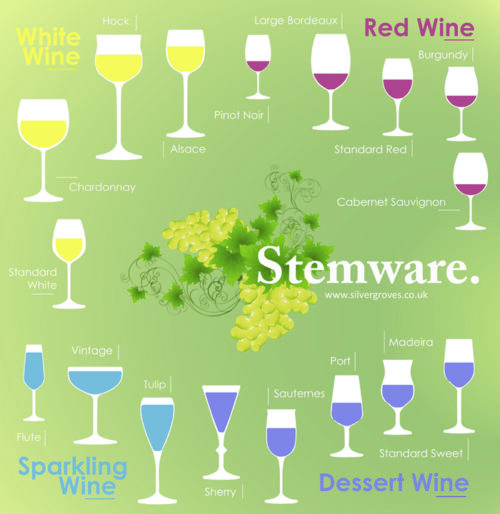
Red wine glasses have a larger bowl so that it can fit in your palm and gently be warmed by your hand. Red wine should be filled to 4 ounces in the glass, or a half glass full. These glasses can commonly be found in a wine gift set, or more specifically a red wine glass set. When decanting red wine, the red wine in your glass should appear clear with no sediment. White wine glasses have a longer stem and a more slender bowl than red wine glasses to keep the heat from your fingers away from the wine, keeping it as cool as possible for longer. The slender bowl helps to maintain the wines liveliness. You should fill your glass with 3 ounces per glass or one third full. White wine glasses are a great gift for special occasions so can normally be found as wine glass sets. Champagne and sparkling wines are served in flutes which are a much narrower shape to preserve the bubbles and directs them up the glass. The glass should be filled three quarters full, or 4 ounces. These fine crystal wine glasses also come in a wine glasses set or a flutes set. Some people use a glass wine decanter for champagne and other bubbly wines, to reduce the fizz so they can get more out of the flavour; you should experiment with using different types of crystal wine glass when removing the bubbles to experience the best of the wines aromas and flavours. It is best to present the empty wine bottle at the table with your decanter as guests will often like to refer back to the bottle.
Leftover Wine
It is advised to re-cork the bottle or seal the decanter in some way and putting it in the refrigerator. This will slow down the ageing process that spoils the wine both for red and white wines. Add marbles to an open bottle or decanter that is only half full until the wine is brought to the top to get rid of air reseal and refrigerate. White wine is the least durable to keep after being opened; red wines that are high in tannins however are considerably more durable.
How To Decant Wine Without A Decanter
Sometimes you won’t have all the equipment you need to decant wine, so there are some ways to get a similar effect. Hopefully some of the below ideas will show you how to decant wine without a decanter.
Double Decanting With Wine
- Decant as normal from the wine bottle to the carafe.
- Wash the bottle with clean water to remove all traces of residue wine and sediment.
- Pour the wine back into the wine bottle with the same decanting method and re-cork.
- The double decanting method adds more air to the wine because it is exposed to the air twice, enabling a faster development time.
Blender Decanting With Wine
- Pour the wine into the blender the same way you would with a decanter to reduce the sediment.
- When you are ready to serve, blend the wine on the highest power for 30 to 60 seconds.
- Allow the froth to subside then serve. You could pour the wine into a decanter to present at the table for appearance purposes.
- Hyper-decanting (wine in a blender) has been shown to greatly improve the aromas and flavours on bold red wines as well as affordable wines.
- Myhrvold’s Theory (below) began the “Hyper Decanting” trend and Wine Searcher goes into greater depths with this insightful interview.
Wine lovers have known for centuries that
decanting wine before serving it often
improves its flavor. Whatever the dominant
process, the traditional decanter is a rather
pathetic tool to accomplish it. A few years
ago, I found I could get much better results
by using an ordinary kitchen blender.”
Use an Aerator On Wine
- A wine aerator is a small glass tool fitted to the end of a wine bottle or the top of your wine glass to filter air through the wine.
- Push a fitted aerator deep into the neck of the wine bottle securely so it will not fall out when pouring.
- Simply pour the wine as though you were pouring directly into a glass, allowing the wine to filter through the aerator. These are exceptionally simple devices that are self-explanatory no matter what design you end up with.
- Allow the wine to sit in the glass for as long as possible. It is because of this last step that makes decanting before the meal more appropriate than making your guests wait before they can enjoy their already poured glass of wine.
- Wine aerators are faster than decanters but are not advisable for aged wines or removing sediment.
Summary On Decanting Wine
My personal preference is to open, decant and serve the wine within an hour, as I find that older wines tend to fade much quicker than younger wines. However wine is all about personal preferences, and with no solid rules it is hard to give a solid answer on how long to decant your wine for. Sometimes you may not be able to find out if your wine was aged in oak and needed to be decanted for that reason, or you may be inexperienced at wine tasting and don’t know how to fully take advantage of the processes. It is known though that strong flavoured wine like Bordeaux Blends, Cabernet Sauvignon, Malbec and Rhône wines will endure decanting well, whereas delicate aromatic wines such as Rosé and sweet whites will not. My suggested period of decanting for wines less than fifteen years old should be approximately 30mins. If your wine is 15-30 years old, gentle and careful decanting of half to a full hour is usually more than enough as they have already aged. For even older wines, you should decant just before serving.
To finish off this blog post, enjoy this brilliant video by The Professional Culinary Institute with Master Sommelier David Glancy, as he decants a mature red wine:
All content from this article has been originally produced by Kate Robinson and is her property. Original blog post can be found at Silver Groves.

